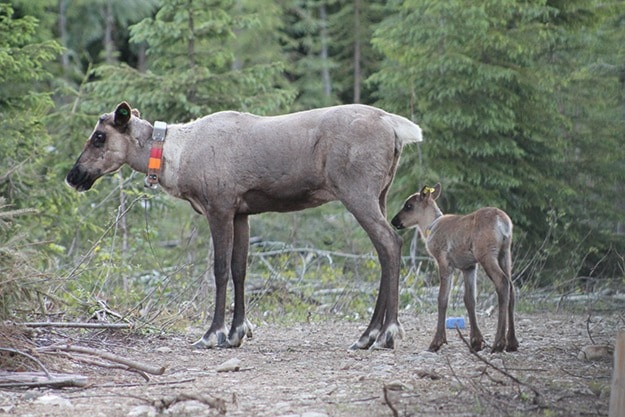Editor,
Re: Environmental groups criticize new mountain caribou recovery proposals
As a member from 2006 to 2014 of the Mountain Caribou Project, a group of environmental organizations working on the Mountain Caribou Recovery Plan of 2007 and its implementation, I would like to clarify information on caribou habitat protection in the Revelstoke Shuswap Planning Unit.
The protection referred to in your article sounds very large however, no matter how good protection of 40 per cent of core caribou habitat sounds, this is referring to what was retained for caribou in the land use plans before the 2007 recovery plan. Mountain caribou were declining at an alarming rate with this protection and government deemed it necessary to have a new protection plan with increased retention of habitat and more recreational closures to recover this provincially endangered species.
Provincial government scientists said an additional 34,000 hectares of core habitat would need to be protected to achieve the "assisted long term self sustaining" (ALTSS) option for recovery chosen by the government. However, the government decided to retain only 10,000 hectares for socio-economic reasons. It was thought this drastic reduction probably downgraded our option for recovery to "maintain with resilience." (MWR)
Further, government then decided to count 2,600 hectares of habitat retained under a former land use plan toward the 10,000 hectares. This left only 7,400 hectares of new protection. Then, in 2011, a biodiversity amendment was approved that allowed forest licensees in this area to log old growth management areas to almost entirely replace the 7,400 hectares they lost in the 2007 recovery plan. Caribou need old growth for food and protection from predators. Old growth also does not attract deer and moose, which attract wolves and cougars, which then prey on caribou.
The ALTSS option for recovery is still written as what we have here, when we certainly are in the MWR option, if not even lower into the "status quo" option. The ALTSS option says some predator prey control would be required in the short term until forest habitat can grow back. The MWR option requires indefinite predator prey control, and status quo means it is not worth doing predator prey control. The caribou herds are left to their own devices, i.e. written off.
The take away message is the habitat piece of the Mountain Caribou Plan of 2007 is not in place in our planning unit. While recognizing the complexity of this issue, I have confined my focus here to habitat for two reasons: first, habitat protection is foundational to caribou recovery, and second, I feel the public should know the truth about the state of habitat protection in our area. This will help people evaluate the issue.
My question is: What do people want in this situation? I strongly suggest the federal and provincial governments protect more caribou habitat. This will probably save the North Columbia Herd at least, and avoid killing so many animals in what is turning into a bloodbath.
Virginia Thompson,
Revelstoke
